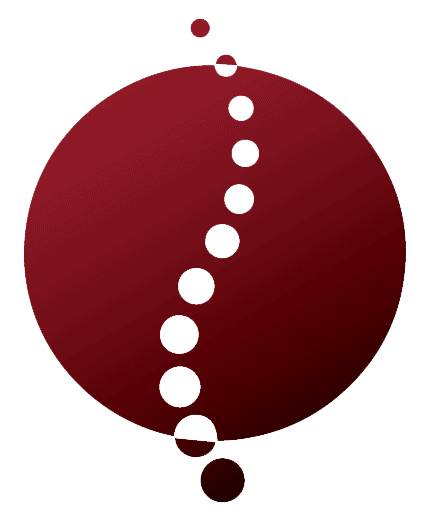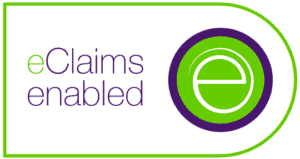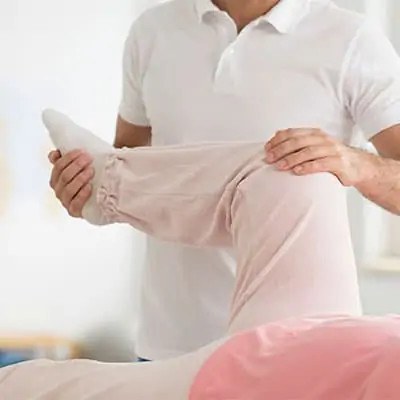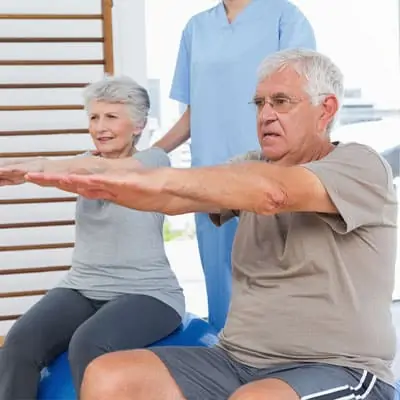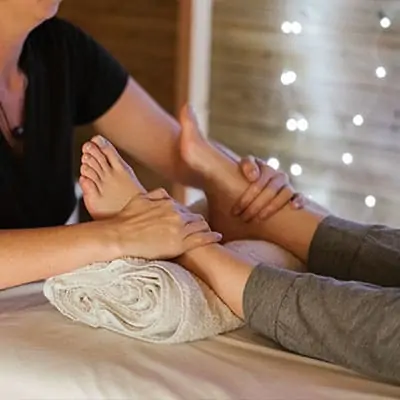Understanding Scoliosis
What is Scoliosis?
Scoliosis is a condition where the spine curves sideways, forming an “S” or “C” shape. This curvature can occur at any part of the spine but is most commonly found in the thoracic (mid-back) and lumbar (lower back) regions. The severity of scoliosis can range from mild to severe, impacting your posture, movement, and overall health. For more information on the different types of scoliosis, you can visit our article on scoliosis types.
Types of Scoliosis
| Type | Description |
|---|---|
| Idiopathic | No known cause, most common type |
| Congenital | Present at birth due to spine malformations |
| Neuromuscular | Associated with neurological conditions like cerebral palsy |
| Degenerative | Occurs in adults due to spine wear and tear |
Importance of Early Detection
Early detection of scoliosis is crucial for effective management and treatment. Identifying the condition at an early stage allows for more conservative treatment options, reducing the likelihood of progression and the need for surgical intervention. Regular scoliosis screening can help in early identification, especially in children and adolescents, who are at higher risk during growth spurts. Learn more about the importance of regular screening.
Benefits of Early Detection
| Benefit | Description |
|---|---|
| Minimizes Progression | Early treatment can prevent the curve from worsening |
| Non-Surgical Options | More effective when the curve is detected early |
| Improved Quality of Life | Reduces pain and discomfort, enhances mobility |
| Cost-Effective | Early interventions are generally less expensive than surgical treatments |
Understanding the importance of early detection can significantly impact your approach to managing scoliosis. Knowing the signs and symptoms is the first step, and regular screenings can ensure timely intervention. For further details, you can read about the symptoms that might indicate scoliosis.
Scoliosis Screening
What is Scoliosis Screening?
Scoliosis screening is a procedure used to detect abnormal curvatures of the spine. Early identification of scoliosis can lead to timely intervention and management, significantly improving the quality of life. The screening process typically involves a series of physical examinations and may include imaging tests like X-rays if necessary. This helps in distinguishing scoliosis from other spinal conditions.
Screening for scoliosis usually starts with a visual inspection of the back while you stand and bend forward. The healthcare provider will look for asymmetries in the shoulders, waist, and hips. If any abnormalities are observed, further diagnostic tests may be recommended. For more details on diagnostic methods, visit our article on scoliosis diagnosis.
Who Should Get Screened?
Scoliosis screening is particularly important for specific groups. Adolescents are the primary target for scoliosis screening because scoliosis often develops during the growth spurts associated with puberty. However, adults and seniors can also benefit from screening, especially if they have symptoms or risk factors associated with scoliosis.
| Group | Recommended Screening Age | Frequency |
|---|---|---|
| Children | 10-12 years | Annually |
| Adolescents | 12-15 years | Annually |
| Adults | Over 20 years | Every 5 years or as needed |
| Seniors | Over 60 years | Every 3 years or as needed |
Regular screening can help in early detection and management. If you experience symptoms such as back pain, uneven shoulders, or a visibly curved spine, seek medical advice promptly. For more information on symptoms, visit our article on scoliosis symptoms.
Understanding who should get screened and the process involved can empower you to take proactive steps in managing spinal health. For more tips on managing scoliosis, check out our resources on scoliosis management and scoliosis exercises.
Screening Methods
Understanding the methods used for scoliosis screening is essential for early detection and effective treatment. Two primary methods are employed: physical examination and imaging tests.
Physical Examination
A physical examination is often the first step in scoliosis screening. During this exam, a healthcare provider assesses your spine for any abnormal curvature. They may ask you to bend forward at the waist, which allows them to observe your spine from different angles.
The Adam’s Forward Bend Test is a common method used during the physical examination. In this test, you bend forward with your arms hanging down, and the examiner looks for any asymmetry or abnormal curvature in the back. This test is simple and non-invasive, making it an effective initial screening tool.
| Test Type | Description |
|---|---|
| Adam’s Forward Bend Test | You bend forward; examiner checks for asymmetry |
| Scoliometer Measurement | Device measures the angle of trunk rotation |
If any signs of scoliosis are detected during the physical examination, the healthcare provider may recommend further evaluation through imaging tests.
Imaging Tests
Imaging tests provide a more detailed view of the spine, helping to confirm the presence of scoliosis and determine its severity. The most common imaging tests used in scoliosis screening are X-rays, MRIs, and CT scans.
X-rays are the primary imaging tool for diagnosing scoliosis. They provide a clear image of the spine, allowing the healthcare provider to measure the degree of curvature. X-rays are quick and effective, making them a standard choice for scoliosis screening.
MRIs (Magnetic Resonance Imaging) offer more detailed images of the spine and surrounding tissues. MRIs are particularly useful if there are concerns about spinal cord abnormalities or other underlying conditions.
CT scans (Computed Tomography) provide cross-sectional images of the spine. They are used less frequently than X-rays and MRIs but can be helpful in complex cases where a detailed view of the spine is necessary.
| Imaging Test | Purpose |
|---|---|
| X-rays | Provides a clear image of the spine; measures curvature |
| MRIs | Detailed images of spine and tissues; checks for abnormalities |
| CT scans | Cross-sectional images of the spine; used in complex cases |
Understanding these screening methods can help you take proactive steps in managing scoliosis. For more information on scoliosis diagnosis and scoliosis treatment, explore our related articles.
Signs and Symptoms
Identifying the signs and symptoms of scoliosis early on can significantly improve treatment outcomes. Awareness of these indicators is crucial for timely intervention and effective management.
Common Signs of Scoliosis
Scoliosis often presents with visible physical signs that can be observed during a scoliosis screening. Here are some common signs:
- Uneven Shoulders: One shoulder may appear higher than the other.
- Uneven Waist: The waistline may be asymmetrical.
- Prominent Shoulder Blade: One shoulder blade might protrude more than the other.
- Leaning to One Side: The body may lean to one side when standing straight.
- Uneven Hips: One hip may be higher or more prominent than the other.
| Common Signs | Description |
|---|---|
| Uneven Shoulders | One shoulder higher than the other |
| Uneven Waist | Asymmetrical waistline |
| Prominent Shoulder Blade | One shoulder blade sticks out |
| Leaning to One Side | Body leans when standing |
| Uneven Hips | One hip higher than the other |
Symptoms that Might Indicate Scoliosis
Apart from physical signs, scoliosis can manifest through various symptoms. These symptoms can vary in severity and may impact daily activities. It’s important to be aware of these indicators to seek early scoliosis treatment.
- Back Pain: Persistent or chronic pain in the back.
- Reduced Range of Motion: Difficulty in bending or twisting the torso.
- Fatigue: Feeling tired easily, especially after standing or sitting for long periods.
- Breathing Problems: Severe curves may affect lung function.
- Numbness or Weakness: In severe cases, there might be numbness or weakness in the legs.
| Symptoms | Description |
|---|---|
| Back Pain | Persistent or chronic back pain |
| Reduced Range of Motion | Difficulty bending or twisting |
| Fatigue | Tiredness after prolonged standing/sitting |
| Breathing Problems | Severe curves affecting lungs |
| Numbness or Weakness | Numbness/weakness in legs |
If you notice any of these signs or symptoms, it’s important to consult a healthcare professional for a proper scoliosis diagnosis. Regular screening and early detection can prevent complications and improve the quality of life. For more information on managing symptoms, explore our articles on scoliosis pain and scoliosis management.
Treatment Options
When it comes to treating scoliosis, there are several approaches available. Treatment plans typically depend on the severity of the curvature and the age of the patient. Here, we will explore both non-surgical and surgical options.
Non-Surgical Approaches
Non-surgical treatments are often the first line of defense in managing scoliosis, especially for mild to moderate cases. These treatments aim to prevent the progression of the spinal curve and alleviate any associated discomfort.
Bracing
Bracing is a common non-invasive treatment for scoliosis, particularly in children and adolescents whose bones are still growing. A scoliosis brace is designed to hold the spine in a straighter position, preventing further curvature.
| Type of Brace | Usage Duration | Effectiveness |
|---|---|---|
| Thoracolumbosacral Orthosis (TLSO) | 18-20 hours/day | High in preventing curve progression |
| Milwaukee Brace | 18-20 hours/day | Effective for high thoracic curves |
| Charleston Bending Brace | Night-time only | Effective for low to moderate curves |
Physical Therapy
Physical therapy, including scoliosis exercises, can help strengthen the muscles around the spine, improve posture, and reduce pain. These exercises are often tailored to the individual’s specific needs.
Observation
For very mild cases, regular monitoring through scoliosis screening is often recommended. This approach involves periodic check-ups to ensure the curve is not worsening.
| Observation Frequency | Patient Age | Curve Severity |
|---|---|---|
| Every 4-6 months | Children | Mild curves (10-20 degrees) |
| Every 6-12 months | Adults | Mild curves (10-20 degrees) |
Surgical Options
For severe cases of scoliosis, where the spinal curve exceeds 40-50 degrees and non-surgical methods are ineffective, surgery might be necessary. Surgical treatments aim to correct the curvature and stabilize the spine.
Spinal Fusion
Spinal fusion is the most common surgical procedure for scoliosis. It involves connecting two or more vertebrae permanently, reducing the curvature and preventing further progression. This procedure uses bone grafts and metal rods or screws.
| Surgery Type | Recovery Time | Success Rate |
|---|---|---|
| Posterior Spinal Fusion | 3-6 months | High |
| Anterior Spinal Fusion | 3-6 months | High |
Growing Rods
For young children who are still growing, growing rods can be an effective surgical option. These rods are adjustable and can be lengthened as the child grows, minimizing the impact on spinal development.
Vertebral Body Tethering
This minimally invasive surgery involves attaching a flexible cord to the spine, allowing for controlled correction of the curvature as the child grows. It is an option for patients with moderate curves who are still in their growth phase.
Both non-surgical and surgical treatments have their own set of benefits and risks. Discussing these options with a healthcare provider can help you determine the best course of action based on the individual’s specific condition. For more information on scoliosis treatment, visit our comprehensive guide.
Importance of Regular Screening
Regular screening for scoliosis plays a crucial role in identifying and managing this condition early. Understanding the benefits of regular screening and knowing when to seek medical help can make a significant difference in treatment outcomes.
Benefits of Regular Scoliosis Screening
Regular scoliosis screening offers several benefits, particularly when it comes to early detection and intervention. Here are some key advantages:
- Early Detection: Catching scoliosis early allows for timely interventions that can prevent the condition from worsening. Early detection is particularly important for children and adolescents, whose spines are still growing.
- Improved Treatment Outcomes: Early diagnosis often leads to better treatment outcomes. Non-surgical options like bracing and physical therapy are more effective when scoliosis is identified early. For more on these treatments, visit our page on scoliosis brace and scoliosis physical therapy.
- Monitoring Progression: Regular screening helps in monitoring the progression of scoliosis. This is crucial for adjusting treatment plans and ensuring that the condition is managed effectively over time.
- Reducing Complications: Early and regular screening can help in reducing complications associated with severe scoliosis, such as respiratory issues and chronic pain. For more information, check our article on scoliosis pain.
When to Seek Medical Help
Knowing when to seek medical help for scoliosis is important for managing the condition effectively. Here are some signs and scenarios that indicate it’s time to consult a healthcare professional:
- Visible Signs of Scoliosis: If you notice visible signs like uneven shoulders, a prominent rib cage, or a noticeable lean to one side, it’s essential to get screened. Refer to our article on scoliosis symptoms for more details.
- Family History: If scoliosis runs in your family, regular screening is advisable. Genetic factors can play a significant role in the development of scoliosis. Learn more about scoliosis causes on our website.
- Rapid Growth in Children: Children and adolescents who are experiencing rapid growth spurts should be screened regularly. Growth spurts can often exacerbate scoliosis. Read more about scoliosis in children.
- Persistent Back Pain: While not all back pain is related to scoliosis, persistent or worsening pain can be a sign of the condition. It’s important to consult a healthcare provider if you experience ongoing discomfort.
Regular scoliosis screening is a proactive step towards maintaining spinal health. By understanding the benefits and knowing when to seek medical help, you can effectively manage scoliosis and improve your quality of life. For more comprehensive information, explore our resources on scoliosis diagnosis and scoliosis treatment.
